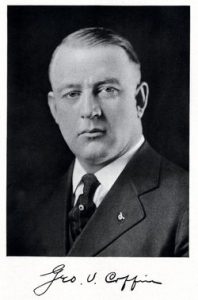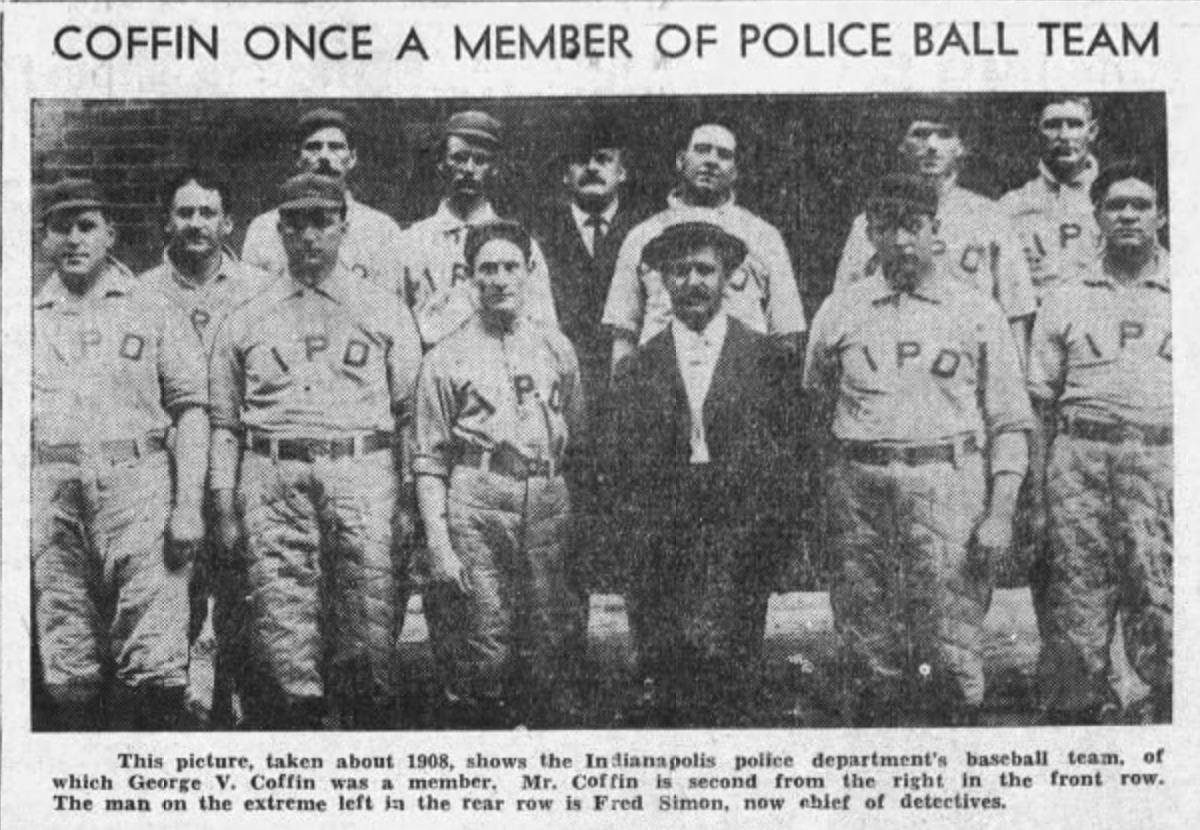
Photo info ...
Credit: ddeedavis via Find A GraveView Source
(May 18, 1875-Apr. 10, 1938). A native of Jay County, Indiana, “Cap” Coffin was the son of William and Melinda Ellen Coffin, who were Quakers. Left an orphan at age 11, he went to live with his aunt, Rose Carey, on a farm in Hamilton County near Carmel. He left home early and traveled to the Pacific Northwest, where he worked in lumber camps, and then enlisted in the U.S. Army in March 1899. Assigned to the 14th Infantry, he fought in the Philippines in 1900 before being transferred to China during the Boxer Rebellion. Coffin participated in the relief expedition that fought its way to Beijing and captured the city in August 1900.

Upon his military discharge in 1901, Coffin settled in Indianapolis. He worked at and then joined the Indianapolis Police Department (IPD) (see ) as a patrolman in 1906.
During the 1913 flood, Coffin received acclaim for rescuing 500 people in . Mayor raised his rank from sergeant to captain because of his work in the flood. He was then elected Marion County Sheriff in 1914, a post he held until January 1, 1918, when he resigned to become chief of IPD. While chief of police, Coffin married Grace Phillips Collins. The couple had three children.
Following his resignation as chief of police in 1920 and with the advent of the (KKK), Coffin became powerful in Republican politics with the organization’s backing. He served in a variety of roles within the local , including city chairman and district chairman.
Known among Republicans as “The Boss,” Coffin’s greatest community role was that of political kingpin. He avoided the limelight, preferring to maneuver behind the scenes, using patronage to benefit party loyalists and to build and maintain a strong constituency. Conservative businessmen trusted him and contributed financially to his candidates. His rapport with Black residents delivered votes even though many Republicans were Klan members. He had the reputation of being a strong family man, and at a time when a wide cross-section of the city’s white Protestant society belonged to the KKK, local ministers supported him for his stance against liquor traffic. Influential in virtually every area of Indianapolis politics, “Cap” Coffin was the quintessential power broker.
From 1924 to 1926, Coffin served as chairman of the Marion County Republican Party. Under his watch, the Republicans nominated and elected Ku Klux Klan-supported as the city’s mayor in the .
On September 10, 1927, Coffin was indicted along with Indiana governor Ed Jackson and Robert I. Marsh, former law partner of Jackson and attorney for the Ku Klux Klan, for violating the state’s corrupt practices act. The indictment stemmed from disclosures that KKK grand dragon made while in prison for his infamous murder of . He informed newspapers that Coffin and Jackson had bribed then-Governor Warren T. McCray to appoint a KKK henchman as prosecuting attorney. Duvall was indicted at the same time. The mayor spent 30 days in jail, while Coffin and Jackson pled the statute of limitations and escaped prosecution.
Despite his connections to the KKK, Coffin remained powerful within Marion County Republican politics. His brand of Republicanism in the city became known as “Coffinism.” In 1928 and 1929, Democrats reminded residents of his connections to Stephenson and the KKK and his alleged participation in political corruption. In 1929, some local Republicans revolted against “the political domination of George V. Coffin, city and district boss.” Yet he continued at the head of the party and controlled the convention that nominated the Republican ticket in October 1929. Democratic election victories across the state and ill health finally brought his resignation from his political position on November 6, 1929.
Even in retirement, Coffin continued to be a force in the Republican Party. His political associates credited him with setting a winning trend for his party’s return to power following the Great Depression by laying important groundwork for a Republican organization that would remain viable for many years.

Help improve this entry
Contribute information, offer corrections, suggest images.
You can also recommend new entries related to this topic.